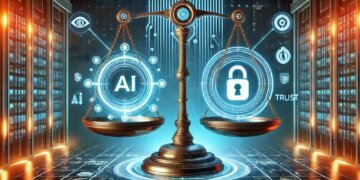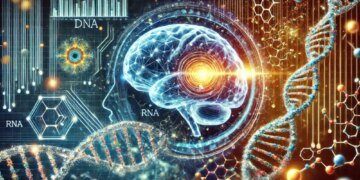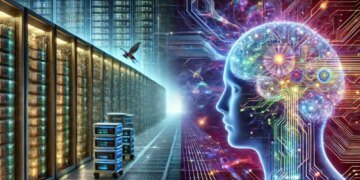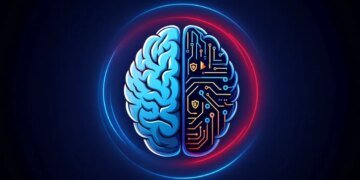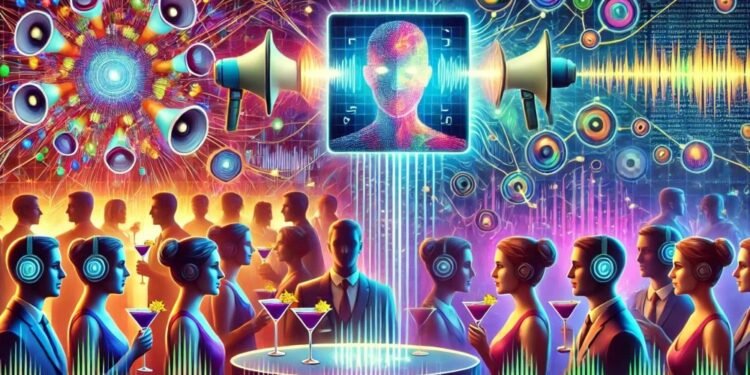Unlocking the Future of Audio Technologies: How AI Solves the ‘Cocktail Party Problem’ 🎉✨
In the ever-evolving world of technology, artificial intelligence (AI) continues to break new ground. One of the most intriguing advances is AI’s capacity to solve the age-old “Cocktail Party Problem” – a complex audio processing challenge. But what exactly is the Cocktail Party Problem, and how is AI poised to revolutionize future audio technologies? Let’s dive in! 🌊🤖
What is the ‘Cocktail Party Problem’? 🍸👂
Imagine you’re at a bustling cocktail party. Multiple conversations are happening simultaneously, yet, miraculously, you can focus on the one conversation that matters to you. This human ability to filter out background noise is what scientists term the “Cocktail Party Problem.”
For machines, this has been a nearly insurmountable task. Traditional audio technologies struggled to isolate specific voices from a cacophony of sounds, making it challenging for applications like speech recognition software, hearing aids, and smart speakers to function optimally in noisy environments.
The Role of AI in Solving the Problem 🧠🔊
Enter AI, bringing machine learning (ML) and deep learning algorithms into the equation. Unlike previous methods, AI leverages enormous datasets and sophisticated algorithms to differentiate and isolate individual audio streams. Here’s how:
- Data Training: AI systems are trained on vast amounts of audio data, exposing them to a variety of noises and voices. This extensive training allows the AI to recognize distinct audio patterns.
- Neural Networks: By employing advanced neural networks, AI can discern the subtle differences in overlapping sounds. These neural networks function similarly to the human brain by identifying and segregating different audio inputs.
- Real-time Processing: AI systems can perform these tasks in real time, making them incredibly efficient at filtering out background noise. This capability is crucial for live applications, such as virtual meetings and real-time translations.
Impact on Future Audio Technologies 🎧🔮
The implications of AI solving the Cocktail Party Problem are nothing short of revolutionary. Here’s a glimpse into the future of audio technologies:
Smart Assistants and Speakers 📱🗣️
Voice-activated assistants like Amazon’s Alexa and Google Home will become significantly more effective. Enhanced by AI, these devices will excel at understanding commands even in noisy settings, making them indispensable household gadgets.
Hearing Aids 🦻💬
For the hearing impaired, AI-driven hearing aids will drastically improve the quality of life. These advanced devices will filter out background noise, enabling users to focus on specific conversations, thereby making social interactions more enjoyable and less strenuous.
Speech Recognition Software 🎙️🧩
Tech giants are racing to incorporate AI into their speech recognition software. From transcribing meetings to translating languages in real time, these AI-enhanced applications will break down communication barriers, fostering global collaboration.
Audio Restoration and Enhancement 🎛️🎵
Even in the field of audio restoration, AI has incredible potential. Imagine being able to clean up old recordings or enhance audio captured in less-than-ideal environments. This capability will find applications in everything from preserving historical speeches to improving podcast audio quality.
Final Thoughts 💬🔍
AI’s ability to solve the Cocktail Party Problem is a game-changer for future audio technologies. As AI continues to evolve, we can anticipate increasingly sophisticated applications that will reshape our interaction with sound. Whether it’s making a phone call in a bustling café or enjoying a crisp movie dialogue amidst a noisy background, AI’s revolution in audio processing promises a future where clarity and precision in sound are the norms.
Stay tuned for more advancements and prepare to hear the future, crystal clear! 🌐🔊
Feel free to share your thoughts in the comments below! 👇🏼💭
For more insights into the intersection of AI and audio technologies, visit the original article at Unite.AI.











